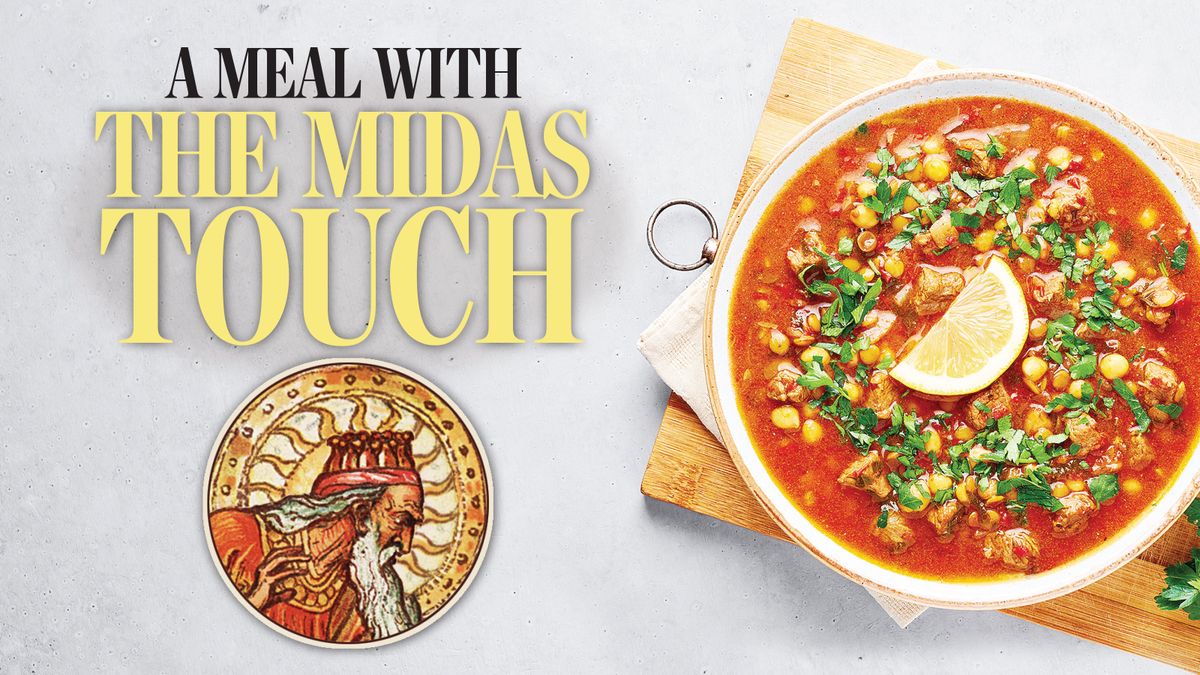Midas meal: Archaeology group to recreate 2,700-year-old meal based on tomb excavation

If you’d like to taste a 2,700-year-old meal, consider these offerings: Nutty sheep’s-milk cheese, spicy fire-roasted lentil-lamb stew and the Midas golden elixir. The dishes are on the menu at a Spokane Valley dinner recreating portions of what experts think King Midas of the Phrygians served for his father’s funeral.
“The Feast of King Midas” is a gala to mark the 75-year anniversary of the Spokane chapter of the Archaeological Institute of America. The Midas meal followed by a lecture is open to the public and scheduled at 6 p.m. May 6 at CenterPlace Regional Event Center in Spokane Valley.
“Yes, there is a real King Midas, known to us through the historical records, who lived in the late eighth century B.C.E.,” said Andy Goldman, Gonzaga University history professor and Spokane chapter president. “We will be reconstructing, as well as we can, an ancient funerary meal from a giant tomb in central Turkey.”
Many burial chamber objects that were discovered are believed to have belonged to Midas’ father, King Gordios, including a piece of textile as part of a shroud covering the skeleton’s body. It was coated with an iron oxide called goethite, lending the fabric a glowing golden color, according to Mary Ballard, Smithsonian Institution senior textile conservator, in a 2016 “ArtNews” article.
The Greeks would have known about King Midas, and he’s likely the source of their mythical Midas who turned items to gold with his touch, Goldman said. The Phrygians had many bronze items that, when polished, looked like gold, he said, and elite residents wore attire with a golden sheen.
“It was a very powerful, rich kingdom, and the Greeks knew all about them,” he said. “There was no gold in the tomb, but there was a lot of bronze material and when polished up, it has a beautiful rich gold color. But more interesting is some remains of clothing have been found and they seemed to have used a technique that was kind of like a cloth of gold. It would have had the appearance of gold.
“We think that maybe the myth springs from all of this goldish bronze and gold-colored clothing that the king and the elites would have worn.”
The Midas gala speaker is Richard Liebhart, an Elon University art history professor emeritus, on the “Great Tumulus of Gordion Excavation.” Liebhart is considered an expert on the archaeological site with a 174-foot earthen mound over a wooden burial structure, both built around 740 B.C.E. Liebhart wrote the book, “Tumulus MM: Fit for a King.”
The site is also sometimes called the Midas Mound.
In 1957, archaeologist Rodney Young and excavators with the University of Pennsylvania Museum found burial items intact, such as fragments of a gold-colored shroud and hundreds of wooden and bronze objects, including pottery and bronze vessels containing organic residues of a funerary feast.
Archaeologists saved those food remnants. By the late 1990s, technology was advanced enough to analyze the samples, Goldman said. Based on that, likely recipes were published and now posted online.
Liebhart, who worked at the Gordion dig in Turkey, has suggested that the mound likely was commissioned by King Midas as “the first prominent and public statement of his power and ambition.” The wooden interior chamber, not the first of its kind, was the oldest example of the form still existing relatively intact.
“They have been able to date the tomb using dendrochronology, the study of tree rings,” Goldman said. “The outside of the tomb is constructed of massive juniper timbers, and because the wood is there and it’s well-preserved, they were able to get dates.”
It’s too early to be Midas’ tomb, but it falls in line with the timeline and a likely funeral ceremony that the King held for his father, he said.
Goldman said the Neo-Assyrian Empire in what is now northern Iraq attacked the Phrygians and provided historical records of a King Midas.
About 20 years ago, the modern interpretation of the Midas meal was done for the first time at the University of Pennsylvania Museum. Goldman, who was a graduate student, attended.
“In 1957, when they excavated the tomb, they exported back to the University of Pennsylvania samples of the food they found in several cauldrons and pots that were still there, but at the time, nobody had the scientific ability to really analyze it.”
About 40 years later, a scientist at the museum used a number of techniques and chemical analysis to figure out what the original foods were, he said.
“The cauldrons held the Midas elixir, a drink that was an interesting combination of mead, honey, wine and barley beer,” Goldman said. It also has a touch of saffron.
“You can actually buy it, because the Dogfish Brewery made up a drink for the earlier occasion called, ‘The Midas Touch,’ and then they continued to sell it, so we’re going to have a pony keg of it for people to sample.”